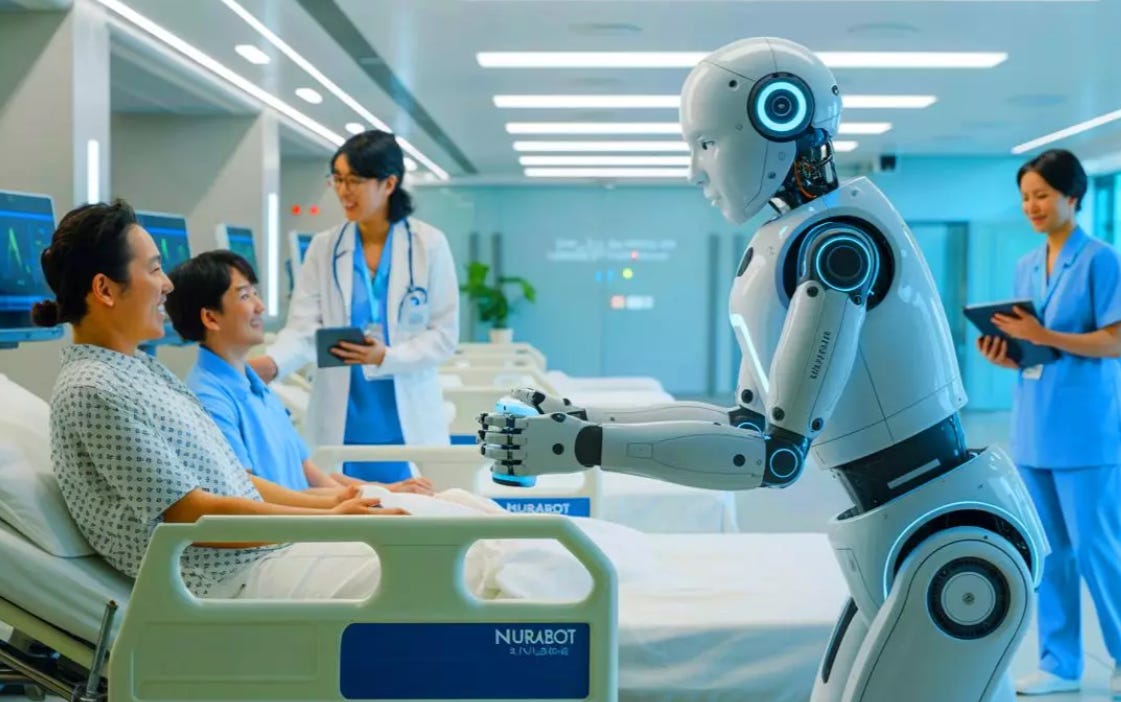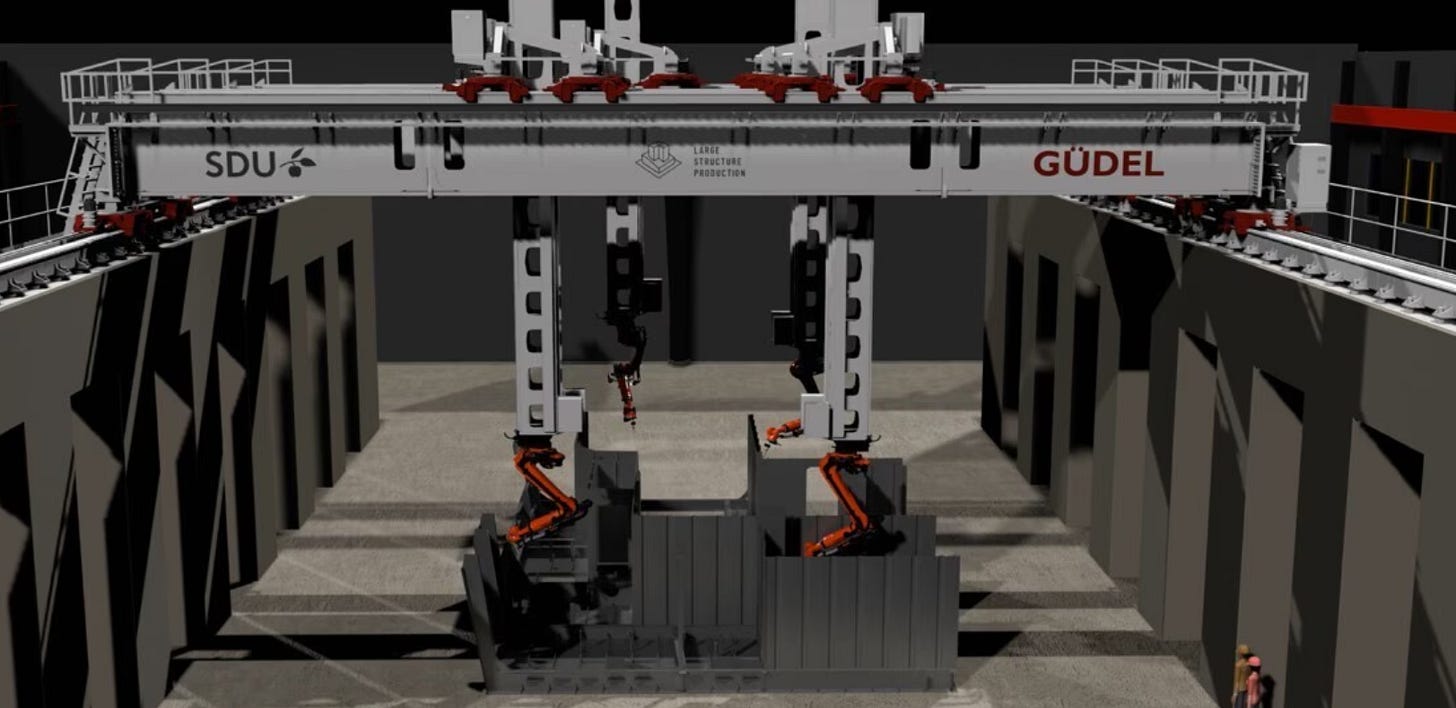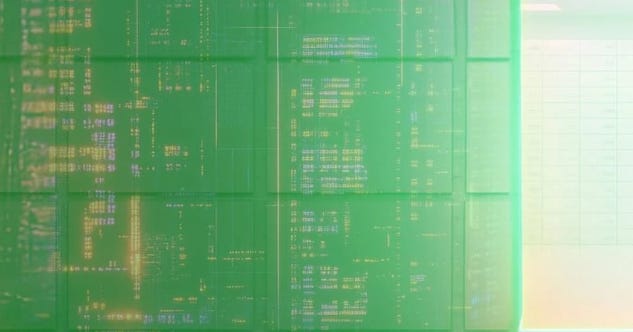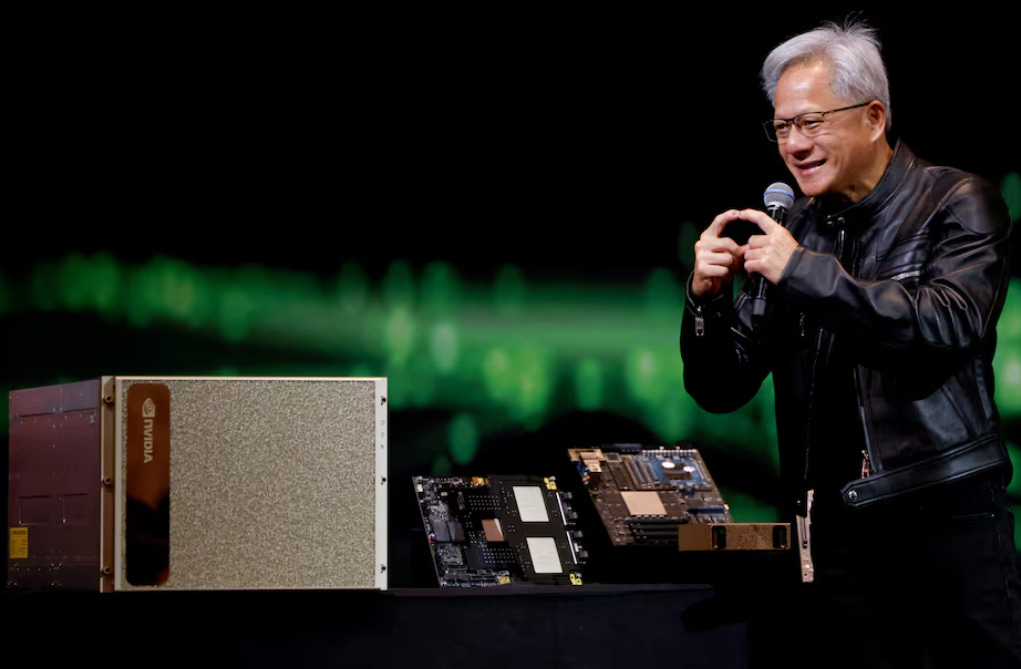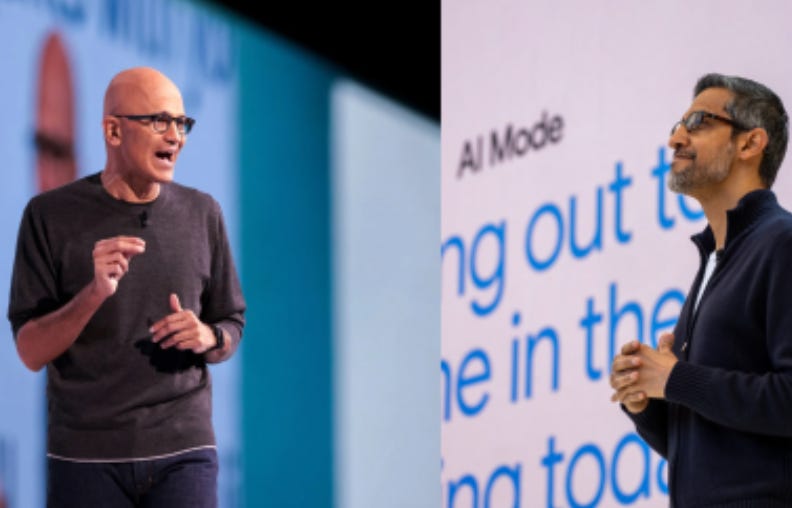Dive in — OpenAI CFO says AI hardware will boost subscriptions/ How Miami schools are leading the AI future/ Taiwan's hospitals deploying advanced robot nurses, and more
Expand your understanding of artificial intelligence daily, with a curated, daily stream of significant breakthroughs, compelling insights, and emerging AI trends that will shape tomorrow.
OpenAI CFO says AI hardware will boost ChatGPT subscriptions in ‘new era of computing’
OpenAI is betting a new “era” of computing will justify the company’s decision to spend billions of dollars on bespoke hardware to go with it, Chief Financial Officer Sarah Friar said.
“You’re really betting on great people and beyond,” Friar said. “It’s not just about imagining what a new platform could look like — you’ve got to be able to craft it. You’ve got to be able to build it. You’ve got to be able to understand supply chains.”
“When you start thinking about it beyond just a phone, it starts to grab the imagination,” she said. “If we can get people around the world excited to use AI, we have many ways to begin to think of a business model around that. So it could be an ongoing, bigger subscription for ChatGPT.”
Read more | CNBC
How Miami schools are leading 100,000 students into the AI future
Miami-Dade County Public Schools, the nation’s third-largest school district, is at the forefront of a fast-moving national experiment to embed generative A.I. technologies into teaching and learning. Over the last year, the district has trained more than 1,000 educators on new A.I. tools and is now introducing Google chatbots for more than 105,000 high schoolers — the largest U.S. school district deployment of its kind to date.
It is a sharp turnabout from two years ago, when districts like Miami blocked A.I. chatbots over fears of mass cheating and misinformation. The chatbots, which are trained on databases of texts, can quickly generate humanish emails, class quizzes and lesson plans. They also make stuff up, which could mislead students.
Now some formerly wary schools are introducing generative A.I. tools with the idea of helping students prepare for evolving job demands. Miami school leaders say they also want students to learn how to critically assess new A.I. tools and use them responsibly.
Read more | NEW YORK TIMES
The wild story of gut health AI toilet startup Throne
Throne isn’t a toilet, but a device that mounts onto the bowl of one. The device, combined with software, analyzes indicators of certain chronic conditions, as well as hydration and urological function — all in the privacy of the home. The software has added privacy controls such as anonymizing the images sent to researchers.
The players started riffing on startup ideas they’d like to do but wouldn’t want to be associated with. “And everyone’s pitching vice industry [ideas]; sex, drugs, and rock and roll. Tim Blumbers said, ‘smart toilets.’
I was like, ‘That’s hilarious. Clearly, you would name that company Throne,’” Scott Hickle recalled.
Fast-forward to 2023 when the nurse-hiring software startup Hickle and Blumberg were working on failed.
They had raised some funding for it and were calling their investors telling them they either needed a new idea or were going to return the funds. Out of the blue, one of their investors said, “You guys thought about smart toilets? We were like: You know, we’ve named that company! That’s Throne.”
They took that as a sign. The pair began researching and turned to Hickle’s mom, a doctor specializing in gerontology. He asked her if there would be any medical benefit in “looking at people’s waste” and she began regaling him with somewhat disgusting stories of the photos of such things that her patients loved to send her.
Short answer: yes. Waste can be analyzed for health-related information. They learned this could be helpful to monitor a wide variety of chronic conditions such as irritable bowel syndrome (IBS), ulcerative colitis, detection of various colon cancers, chronic kidney disease, enlarged prostate, as well as conditions that could be identified or monitored by looking at other waste, such as menstrual blood.
Read more | TechCrunch
Taiwan's hospitals are deploying advanced robot nurses to combat the global nursing shortage
In an era where healthcare is rapidly evolving, Taiwan is emerging as a leader in integrating artificial intelligence (AI) within its medical infrastructure. At the center of this transformation is Nurabot, an AI-powered robot nurse designed to alleviate the increasing burdens on medical staff.
As the world faces a looming shortage of 4.5 million nurses by 2030, according to a World Health Organization report, Taiwan’s approach offers a glimpse into a potential solution.
The integration of AI into healthcare is not just a technological leap but a necessary evolution to address pressing issues like nurse burnout. In Taiwan, AI is reshaping hospital operations through advanced robots like Nurabot, which is trained to handle routine and repetitive tasks.
These tasks include delivering medications, patrolling wards, and guiding visitors, effectively reducing the workload of human nurses.
Read more | RUDE BAGUETTE
How robotics and AI are reshaping heavy industry by automating the un-automatable
Unlike traditional factories that rely on fixed automation, the LSP Center is pioneering mobile, adaptive systems with the ultimate goal of rethinking not just individual tasks, but entire production flows for massive and variable products.
“Large structure production has long resisted automation because of its scale, complexity and low production volume,” said Professor Christian Schlette, leader of the LSP Center. “But with new robotic systems, AI-driven process planning and digital twin technologies, we can begin to change that.”
The LSP Center is designed as a full-scale testbed and development environment, bringing together academia, robotics engineers and leading industrial partners to co-create scalable, transferable technologies. Its research spans across mobile robotic platforms that can move around large components, intelligent software that adjusts in real time to shifting workflows, and digital twin models that map entire production processes in virtual space.
One key challenge is mobility. In car manufacturing, products move through highly structured production lines designed for speed and repetition. In contrast, large structure production is defined by scale and immobility – components like wind turbine towers or ship blocks are too large to be easily moved.
Read more | WORLD ECONOMIC FORUM
For banks, the AI reckoning is here
GenAI can already customize advice at scale; soon, agentic AI will autonomously execute routine tasks from trade settlement to document review. Without a unified strategy and the right foundations, the pilots that banks are investing significant time and resources into will never graduate—and competitors will own the privileged customer touchpoints you leave behind.
Traditional moats are being dismantled. The banking business model has long relied on customer inertia, opacity in pricing, and control over distribution. AI is eroding all three. As AI-powered financial agents become more sophisticated, they will fundamentally change how customers interact with banks, forcing institutions to rethink their value proposition.
Current profit models are also coming under strain. Markets are becoming more transparent, making it easier for customers to compare offerings. And while AI-driven efficiencies will lower bank costs, customers will expect many of these savings to be passed on to them.
Within the next few years, and certainly by the end of the decade, the banking landscape will look fundamentally different.
Read more | BOSTON CONSULTING GROUP
Amid 'Jensanity', Nvidia signals plans to keep AI crown
When asked how Nvidia planned to deal with AI spending slowdown, Huang said, "AI infrastructure is being built out (everywhere) - that's one of the reasons I'm travelling around the world... AI infrastructure is going to be a part of society."
At Computex, Huang revealed a means of growth that does not rely on mega sovereign infrastructure arrangements: new technology that expands Nvidia's grip on the AI market.
The tech's centrepiece is called NVLink Fusion. It allows companies to plug custom chips into Nvidia's AI infrastructure, thereby becoming a platform upon which others can build.
The bet is that drawing companies to build hardware that utilises Nvidia's Fusion platform will drive demand for the underlying AI network and data centre parts that Nvidia sells.
Nvidia has also begun to reach into the enterprise market. This week, it launched a line of servers that Huang described as an "enterprise AI supercomputer".
Read more | REUTERS
In Taiwan and China, young people turn to AI chatbots for ‘cheaper, easier’ therapy
In the pre-dawn hours, Ann Li’s anxieties felt overwhelming. She’d recently been diagnosed with a serious health problem, and she just wanted to talk to someone about it. But she hadn’t told her family, and all her friends were asleep. So instead, she turned to ChatGPT.
“It’s easier to talk to AI during those nights,” the 30-year-old Taiwanese woman, tells the Guardian.
In China, Yang*, a 25-year-old Guangdong resident, had never seen a mental health professional when she started talking to an AI chatbot earlier this year. Yang says it was difficult to access mental health services, and she couldn’t contemplate confiding in family or friends. “Telling the truth to real people feels impossible,” she says.
But she was soon talking to the chatbot “day and night”.
Read more | THE GUARDIAN
Microsoft’s and Google’s dueling developer conferences reveal opposite AI strategies
At Build, Microsoft placed a far greater emphasis in its announcements on tools that are designed to help enterprise customers create AI agents and get them to successfully automate workflows.
Microsoft’s announcements were about how to allow agents to use tools, get agents to work with other agents, and, critically, to control what data AI agents access. These things matter to big companies and governments.
Contrast that to what Google announced at I/O. Here the emphasis was almost entirely on consumers, not large organizations. It was about individual web users and individual content creators.
The biggest news was the revamping of Google’s core Search product, with more AI Overviews, which provide capsule answers to queries, and also a new “AI Mode” that provides a more native AI experience, similar to what users get with OpenAI’s ChatGPT, using Google’s most capable AI models. It will also have new features that allow shoppers to virtually try on outfits as they shop.
Read more | FORTUNE
Spain dives into AI-generated movies amid heated global debates about AI's role in filmmaking
Spain is beginning to integrate artificial intelligence into its film and television industries, attempting to position itself as a pioneer in both the creation and regulation of AI content.
The shift includes notable projects like "The Great Reset," an AI-generated feature film presented at the Berlin International Film Festival in 2025.
The sci-fi thriller, directed by Daniel H. Torrado, uses AI for image synthesis, animation, and post-production, eliminating the need for on-screen actors or physical locations.
Despite its technological innovations, human involvement remains crucial, with the script, artistic direction, and narrative supervised by a creative team led by Torrado. Real actors served as references for interpretation and dubbing in key scenes.
“AI allowed us to simulate complex decisions early on and experiment without the budgetary risk that often paralyzes many independent creators,” Torrado told the Hollywood Reporter.
“Human oversight was constant. Every artistic, narrative, and emotional decision went through my hands. AI was a powerful tool, not a substitute for the creator.”
Read more | DECRYPT
Unmissable AI
Your daily dose of curated AI breakthroughs, insights, and emerging trends. Subscribe for FREE to receive new posts, thanks!




